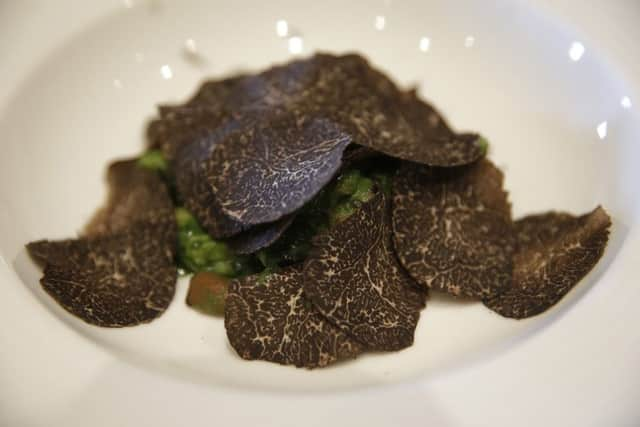Dogs trained to sniff out truffles as demand grows


As more landowners plant orchards in the hope of harvesting truffles, more dogs are being trained to detect the earthy delicacies, which take several years to ripen on tree roots underground.
“There is huge demand for truffle dogs right now,” said Alana McGee, co-founder of the Truffle Dog Company, which helps orchard owners search for truffles and trains dogs how to find them in orchards or in the wild.
Advertisement
Hide AdAdvertisement
Hide Ad“Truffle-hunting is right up their alley. It’s fun for the dogs. They get rewarded for using their noses, which is how they see the world,” she said.


On a recent morning, Ms McGee’s dog Lolo, a brown and white lagotto Romagnolo, sniffed for signs of Perigord and burgundy truffles on the roots of oak and hazelnut trees planted next to Robert Sinskey’s vineyards in Carneros, California.
Mr Sinskey was the first Napa Valley wine-maker to plant a truffle orchard five years ago and wants to be the first California grower to harvest truffles, hopefully next year. He plans to employ Ms McGee to teach his dogs the art of truffle-hunting.
“I hope my dogs will finally be able to earn their keep,” Mr Sinskey said. “It will be nice to see them actually work.”
The lagotto Romagnolo is an Italian breed commonly used to hunt truffles, but Ms McGee said any dog can be trained. “It’s about working with the dogs’ personalities and different learning styles.”
In Europe, truffle hunters traditionally used pigs, but in recent years the job has gone to dogs, which are easier to manage, less conspicuous and less likely to eat the tasty tubers or bite a hand trying to snatch one from their mouths.
Known as the diamonds of the culinary world, most black truffles come from Europe or Australia and cost $800 to $1,200 (£509-£763) per pound, but supplies are shrinking while appetites are expanding worldwide, according to Robert Chang, chief truffle officer of the American Truffle Company.
“As people get richer all the time, the demand for truffles will continue to grow,” Mr Chang said. “Ten years ago, you mention the word truffles, and people think, ‘Oh, it’s the chocolate truffles.’”
Advertisement
Hide AdAdvertisement
Hide AdEuropean black truffles, the ones most coveted for their taste and aroma, are notoriously fickle. Few in North America have successfully harvested them but many are trying because they could be highly profitable.
The American Truffle Company is working with dozens of landowners across the US to grow European black truffles commercially. It’s still too early to judge their success since the orchards were planted less than five years ago, and it takes at least that long for truffles to ripen.
But in March, Mr Chang’s colleague, Paul Thomas, said he harvested Britain’s first cultivated black truffle from fungus he planted in Leicestershire six years ago, using the same techniques their company is using in the US and other countries.
In California’s wine-growing regions of Napa and Sonoma valleys, the American Truffle Company is working with several wine-makers, including Mr Sinskey, Rocca Family Vineyards, former Intel Corp chief executive Paul Otellini and most recently Peju Province Winery.
The trees do not require much water, so they have not been affected by California’s record drought, which has forced farmers to tear out orchards and reduce crop plantings.
Napa Valley chef Ken Frank, widely regarded as America’s top truffle chef, imports the fungus from Italy, France and Australia. He loves the idea of serving fresh, locally grown truffles at his restaurant La Toque.
“To be able to get a truffle that was dug in Carneros this morning for me to put on the menu tonight, that’s a game changer,” Mr Frank said.
“That’s a big deal and we’re very excited about it.”